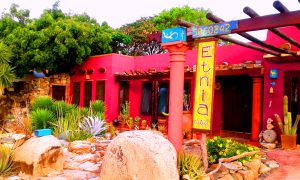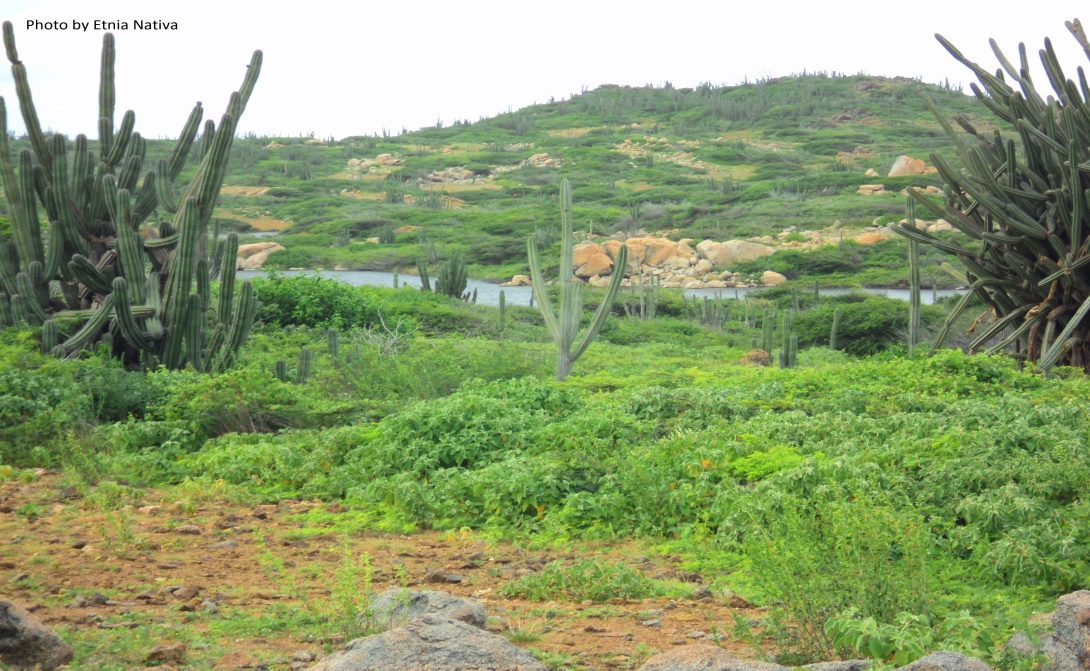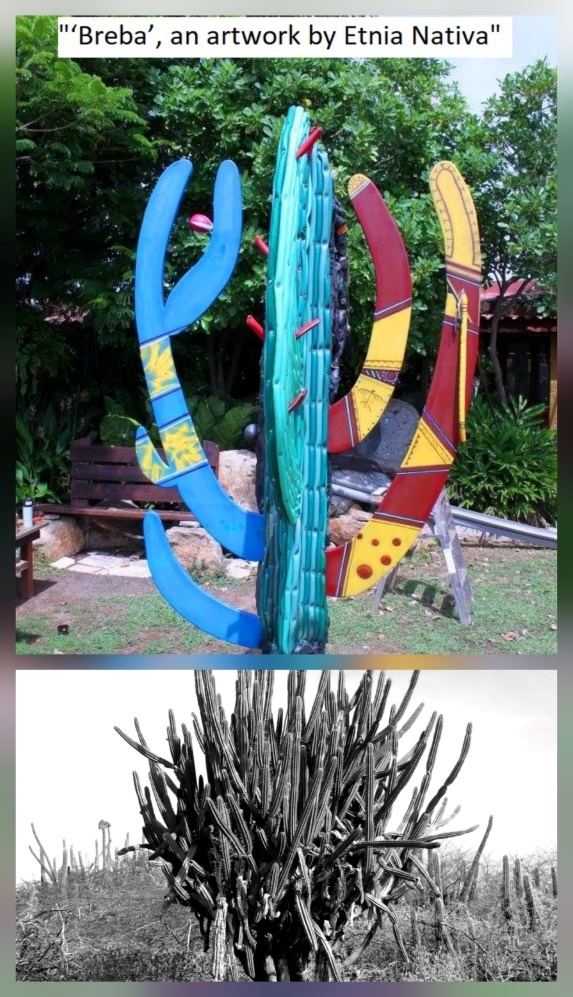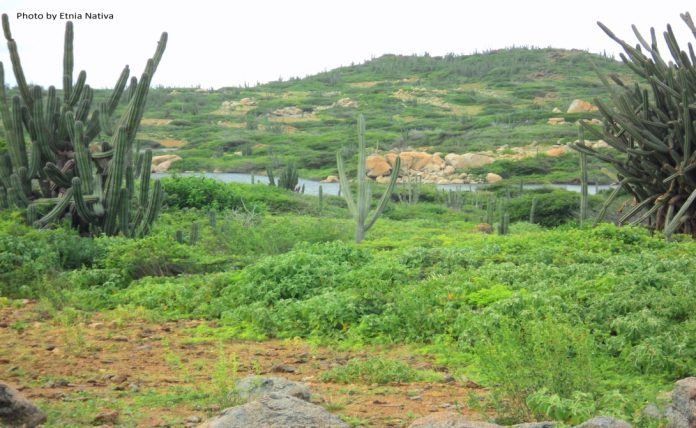The narrative of Etnia Nativa—centered on Aruba’s native ethnicity—highlights the importance of recovering and preserving the island’s maternal cultural identity and the natural heritage we’ve inherited, including its iconic rocks.

We share an authentic native perspective, educate the public, and inspire readers to adopt an ‘island caretaker mindset.’
In this episode, we explore Aruba’s native cacti.

Aruba’s flora paints the island with a rugged yet captivating beauty. From the diverse agave species to the towering candelabra cacti and low-lying Opuntia bushes, native vegetation forms the backbone of the island’s landscape. These plants do far more than shape the scenery—they provide essential habitats for native animals, form wildlife corridors, prevent erosion by anchoring the soil after rain, and help mitigate the greenhouse effect.
Despite suffering severe decline since colonial times, Aruba’s arid climate still nurtures a surprisingly rich variety of native plant species. These resilient plants are well adapted to the island’s dry, rocky terrain and have played a vital role in its ecological, social, and cultural sustainability.
Aruba’s native flora is deeply woven into the island’s cultural fabric. These plants are not merely artistic silhouettes on the sunset—they are living symbols of national identity. Preserving this entire species means protecting the island’s natural heritage for future generations. The thorny bushes, hardy trees, and iconic cacti may not be abundant in species or variety, but their presence is unmistakable and essential.

Among them, succulents—especially cacti—hold a prominent place. Their fruits and night-blooming flowers provide critical nourishment for a wide range of local wildlife, including birds, bats, reptiles, moths, and bees. Their seeds are dispersed naturally by wind and wildlife, ensuring the continuation of their species.
Three species of candelabra (or organ pipe) cacti dominate Aruba’s wild landscape:
Stenocereus griseus – This cactus grows straight up, branching near the base. Its thorns are arranged in neat rosettes, giving it a symmetrical appearance.
Cereus repandus – Known locally as Breba, this is the largest of the three. It resembles a tree more than a typical cactus, branching out higher from the ground. Its thorns form dense, outward-pointing rows.
Pilosocereus lanuginosus – Locally called Cadushi di Plushi, this cactus stands out with its long white hairs and yellow prickles at the tips of its branches.
These cacti bloom under the cover of night, feeding nectar-hungry bats and birds and playing a vital role in maintaining Aruba’s delicate ecosystem.
Aruba is also home of two varieties of melon cactus, four species of Opuntia, commonly called Tuna, one species of Acanthocereus, known locally as Cushicuri or Cadushi di Colebra (Snake Cactus), Pereskia guamacho, an unusual cactus with leaves, known as Asufro phosphorus.
In addition, the island hosts around eight species of Agave, several Bromeliads, and a wide variety of xerophytic plants—all perfectly adapted to Aruba’s dry climate.
Preserving Aruba’s Green Legacy
Aruba’s wild flora is more than a backdrop—it’s a living testament to the island’s resilience and natural beauty. By understanding and protecting these native plants, especially its succulents, we can ensure that Aruba’s unique landscapes continue to thrive for generations to come.
Stay tuned for more as we dive deeper into the world of Aruba’s succulents in this new episode—uncovering their hidden stories, ecological importance, and cultural significance.
Explore Aruba’s Roots at Etnia Nativa
If you’ve enjoyed discovering our ancestral stories and want to delve deeper into the true identity of the Aruban people, we invite you to experience Etnia Nativa—the Caribbean’s only “living museum” of its kind, celebrating the island’s rich mestizaje (cultural blending).
Founded in 1994, Etnia Nativa has been a cultural pioneer—Project Aruba’s National Park.Advocator for Archaeological Museum Aruba, Artisan foundations, and several grassroots initiatives dedicated to heritage and conservation.
Etnia Nativa is quietly tucked away near the high-rise hotels. A private residence anda cultural sanctuary,entering is going through a gatewayin to an Aruba dimension.A magical education, experience from off the beaten path.Crave your curiosity and discovering the authentic.
Connect with the spirit and soul of Aruba’s ancient heritage through a one-of-a-kind experience unlike anything else on the island.Whats App+297 592 2702 etnianativa03@gmail.com
















